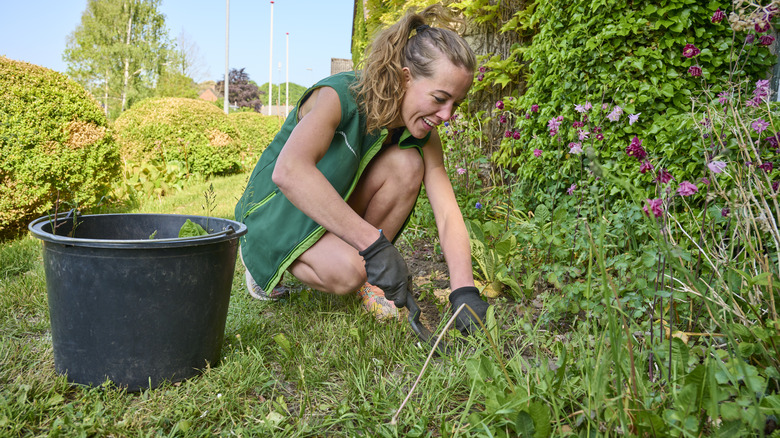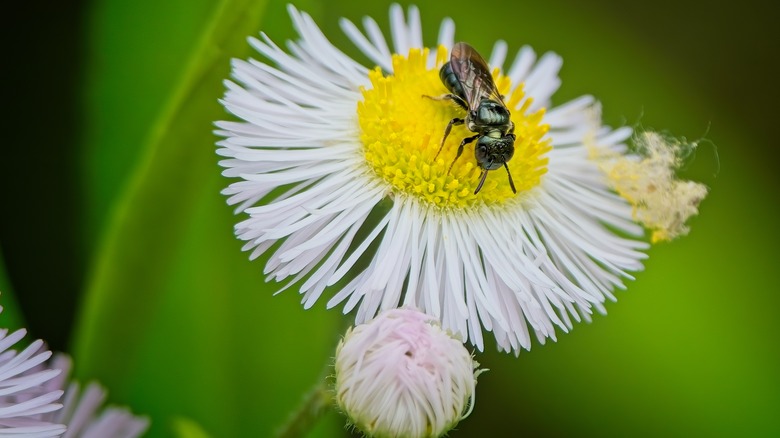The Native Weed You Should Leave Alone If You Love Pollinators In Your Yard
Weeds can be the bane of any gardener's existence as they disturb the soil, take over the terrain, and compete with other plants for nutrients and water. Before removing any questionable weeds, however, you should determine if the weeds in question are wildflowers. Wildflowers are different than weeds, but at first glance, a flower like fleabane might seem like a noxious weed in your garden. If you're a fan of pollinators flitting through your yard or garden, though, take a second look because one native weed you shouldn't remove is fleabane. Fleabanes feature an appearance similar to a daisy with a yellow disk surrounded by a ray of delicate petals. Removing this native flower from your yard or garden can reduce the amount of food available for area pollinators, as various bees, moths, and butterflies like the flower.
Fleabane Erigeron, part of the Asteraceae family, consists of nearly 390 species, with 170 North American species, according to the United States Department of Agriculture (USDA) Plant Library. Among those native in the Lower 48 states are the Eastern daisy fleabane (Erigeron annuus), also known as annual fleabane, and Philadelphia fleabane (Erigeron philadelphicus), a biennial. Both wildflowers grow along the roadside as well as in the meadows and fields.
Why grow native fleabane in your yard
Fleabane is a pollinator-friendly wildflower, particularly for small bees and butterflies. It features tiny heads, which makes it easier for small pollinators to retrieve nectar, reports Gurney's Seeds & Nursery Co. Native fleabanes are an excellent way to bring more bees to your yard and garden, as they attract various bee species, such as sweat bees, bumblebees, and leafcutter bees. Their draw for pollinators leads some gardening experts to encourage people to use fleabane in pollinator gardens. Songbirds and hummingbirds are also drawn to these charming flowers, thereby helping pollination efforts.
A low-maintenance flower that reproduces only by seed, fleabane is easy to grow. If you like it, leave it undisturbed. It thrives in well-drained soil and needs full sun to partial shade. Drought-tolerant, it's ideal for filling in cracks in pavement, near foundations, and anywhere else you need, often self-seeding there. Fleabane grows in the spring and continues to early fall, growing rapidly to a height of 1 to 3 feet. Best of all, it can compete against weeds, and propagation is simple from either seed or division. To grow from an established plant, set the fleabane in a hole slightly deeper than the plant's main root, then fill the hole around it with soil, tapping it gently. Water it enough so that the water reaches the lower roots, then make sure the soil is regularly moist but not soggy.

